Abstract
A single gene mutant (elongated internode [ein/ein]) with accelerated shoot elongation was identified from a rapid cycling line of Brassica rapa. Relative to normal plants, mutant plants had slightly accelerated floral development, greater stem dry weights, and particularly, increased internode and inflorescence elongation. The application of the triazole plant growth retardant, paclobutrazol, inhibited shoot elongation, returning ein to a more normal phenotype. Conversely, exogenous gibberellin A3 (GA3) can convert normal genotypes to a phenotype resembling ein. The content of endogenous GA1 and GA3 were estimated by gas chromatography-selected ion monitoring using [2H]GA1, as a quantitative internal standard and at day 14 were 1.5- and 12.1-fold higher per stem, respectively, in ein than in normal plants, although GA concentrations were more similar. The endogenous levels of GA20 and GA1, and the rate of GA19 metabolism were simultaneously analyzed at day 7 by feeding [2H2]GA19 and measuring metabolites [2H2]GA20 and [2H2]GA1 and endogenous GA20 and GA1, with [2H5]GA20 and [2H5]GA1 as quantitative internal standards. Levels of GA1 and GA20 were 4.6- and 12.9-fold higher, respectively, and conversions to GA20 and GA1 were 8.3 and 1.3 times faster in ein than normal plants. Confirming the enhanced rate of GA1 biosynthesis in ein, the conversion of [3H]GA20 to [3H]GA1 was also faster in ein than in the normal genotype. Thus, the ein allele results in accelerated GA1 biosynthesis and an elevated content of endogenous GAs, including the dihydroxylated GAs A1 and A3. The enhanced GA production probably underlies the accelerated shoot growth and development, and particularly, the increased shoot elongation.
Full text
PDF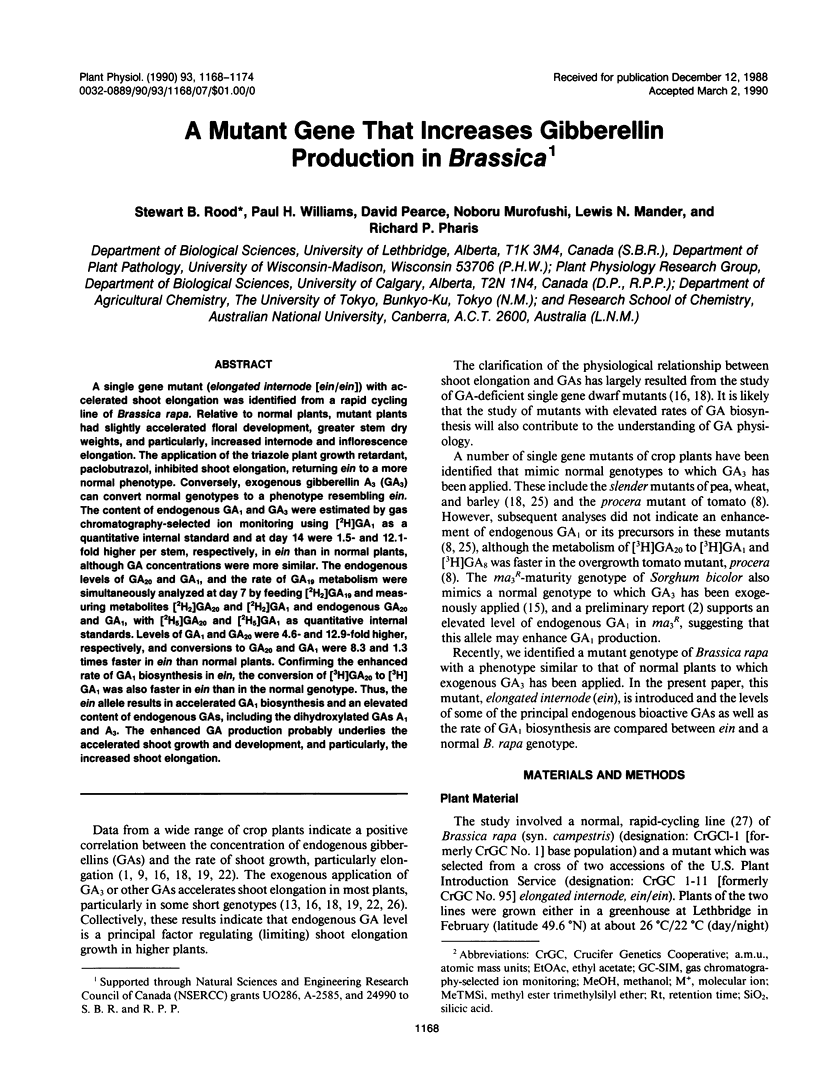
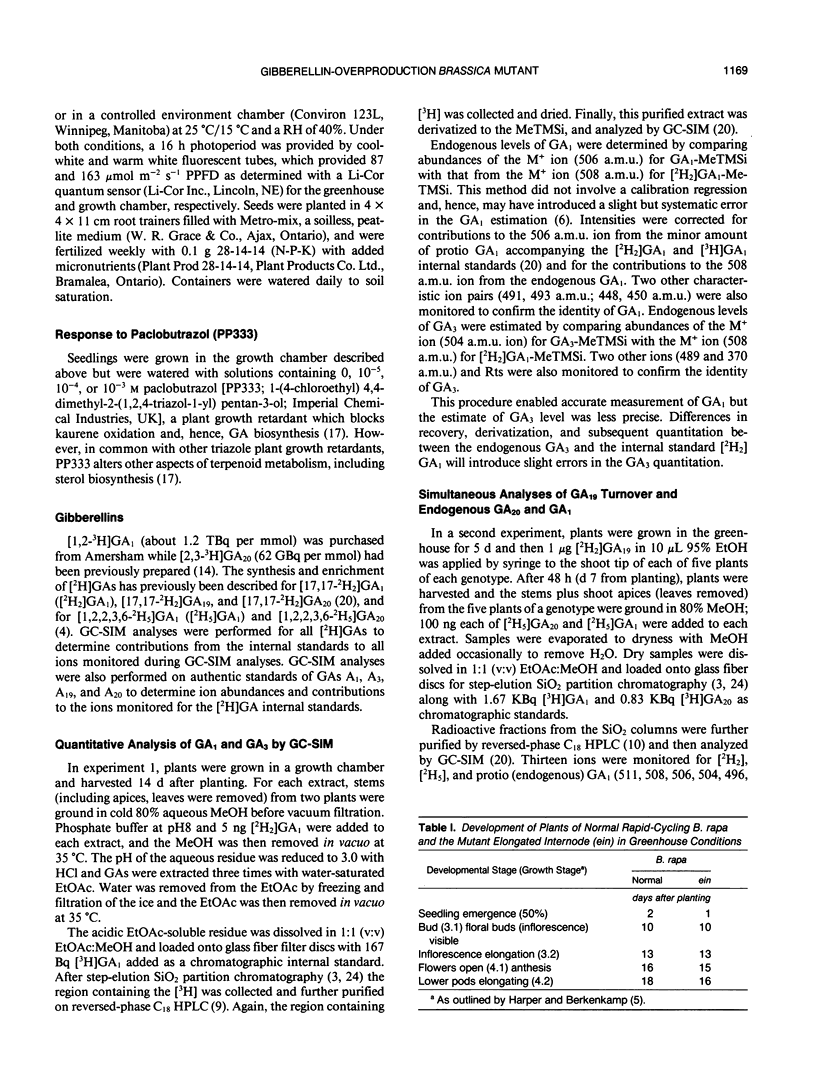
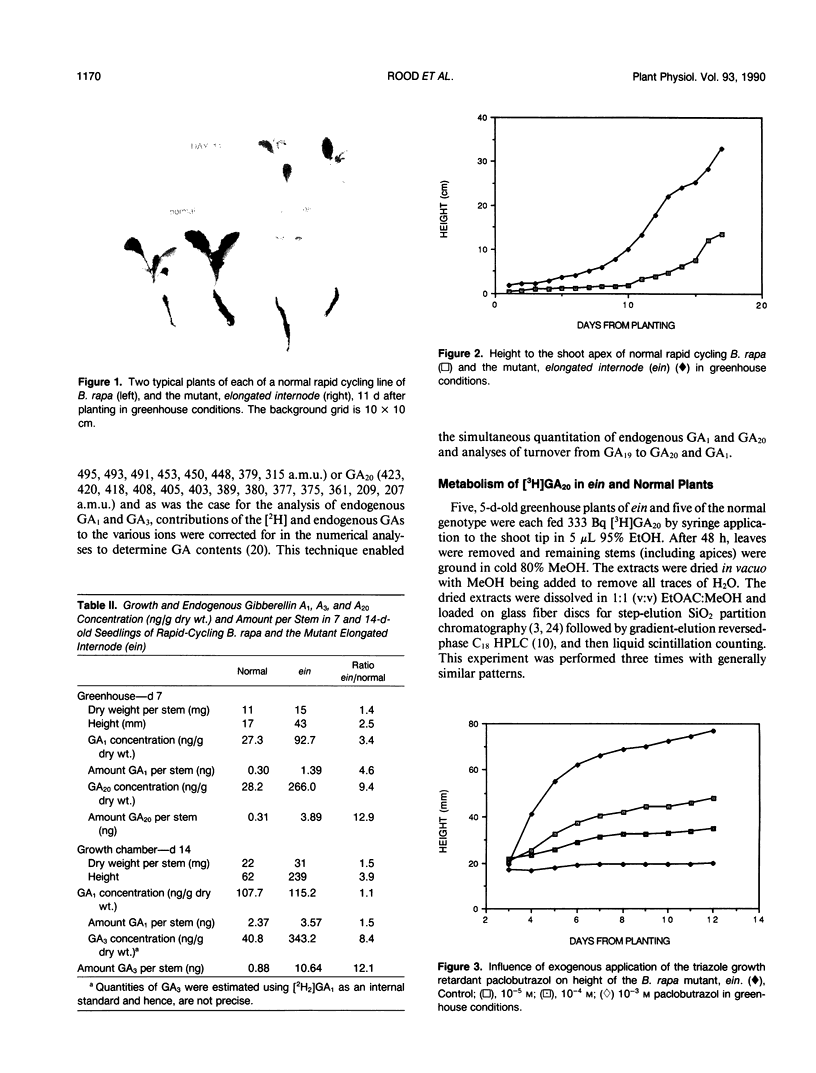
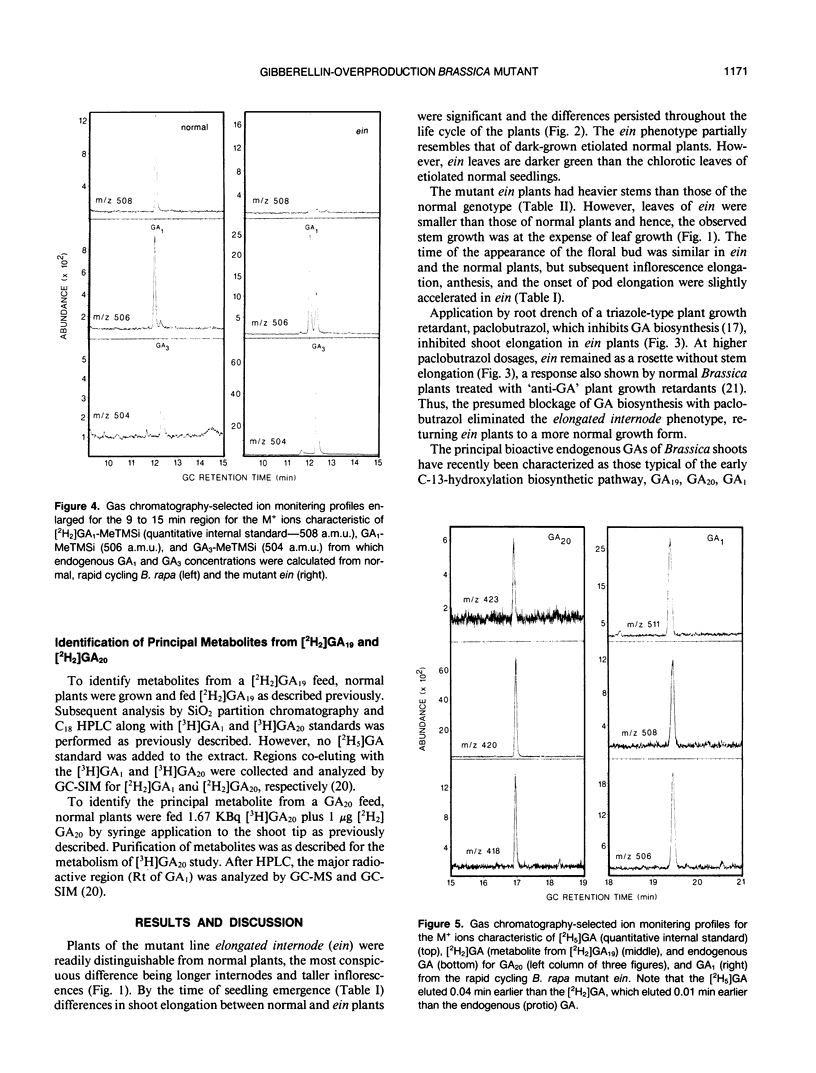
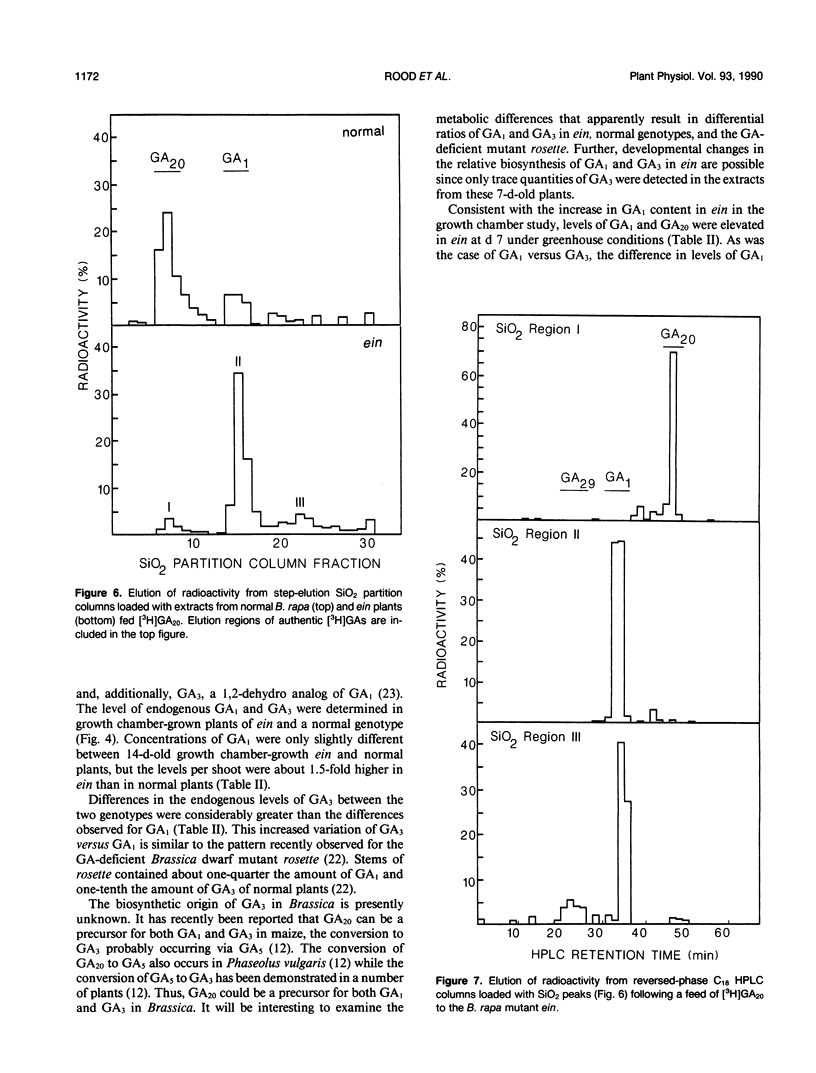
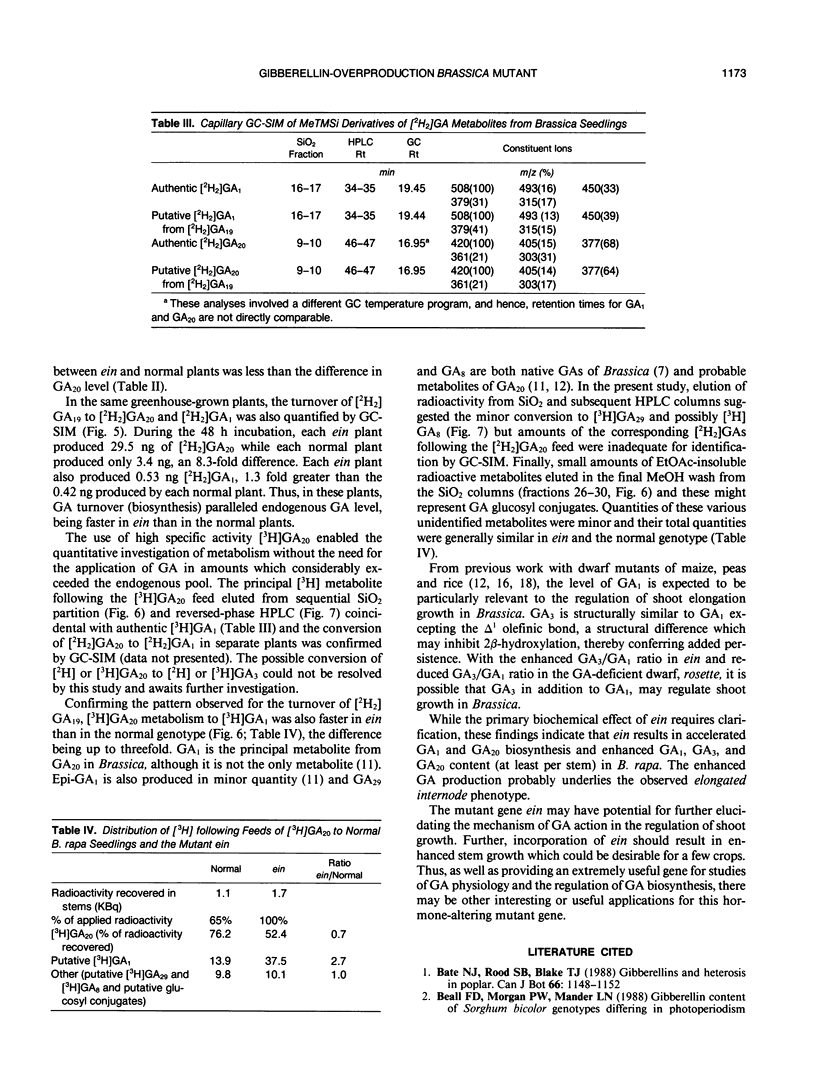
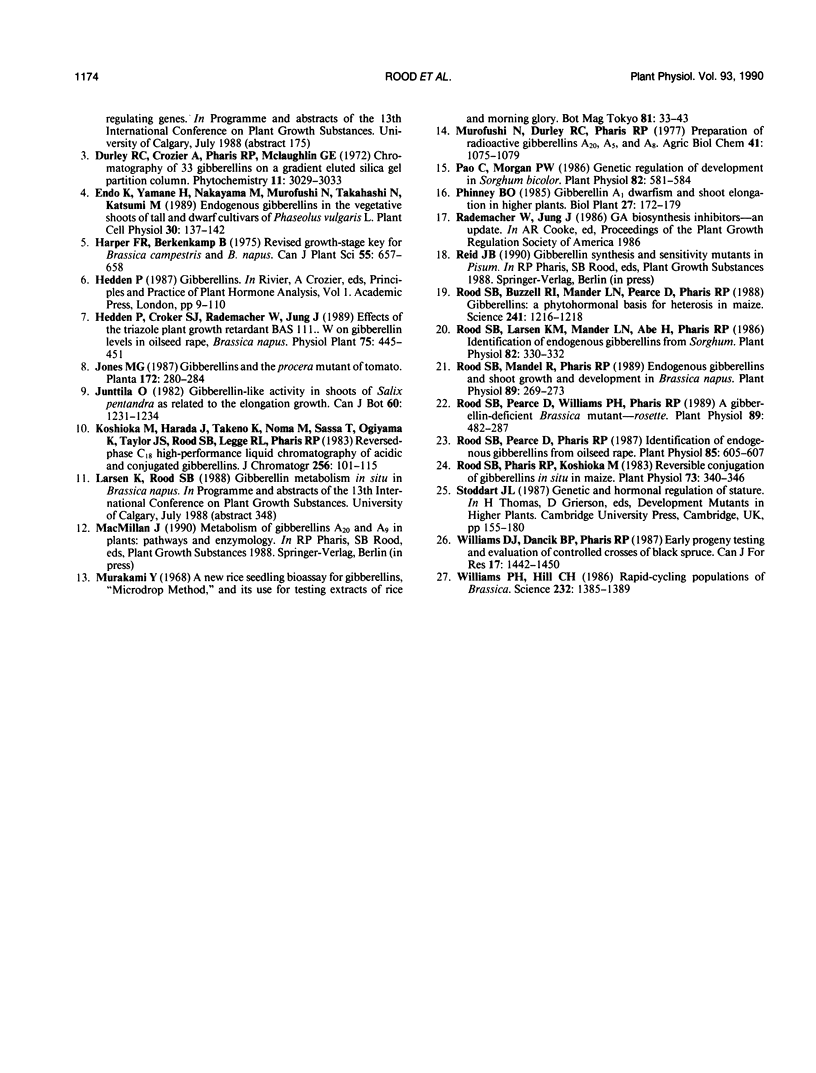
Images in this article
Selected References
These references are in PubMed. This may not be the complete list of references from this article.
- Pao C. I., Morgan P. W. Genetic Regulation of Development in Sorghum bicolor: II. Effect of the ma(3) Allele Mimicked by GA(3). Plant Physiol. 1986 Oct;82(2):581–584. doi: 10.1104/pp.82.2.581. [DOI] [PMC free article] [PubMed] [Google Scholar]
- Rood S. B., Buzzell R. I., Mander L. N., Pearce D., Pharis R. P. Gibberellins: a phytohormonal basis for heterosis in maize. Science. 1988 Sep 2;241(4870):1216–1218. doi: 10.1126/science.241.4870.1216. [DOI] [PubMed] [Google Scholar]
- Rood S. B., Larsen K. M., Mander L. N., Abe H., Pharis R. P. Identification of endogenous gibberellins from sorghum. Plant Physiol. 1986 Sep;82(1):330–332. doi: 10.1104/pp.82.1.330. [DOI] [PMC free article] [PubMed] [Google Scholar]
- Rood S. B., Mandel R., Pharis R. P. Endogenous Gibberellins and Shoot Growth and Development in Brassica napus. Plant Physiol. 1989 Jan;89(1):269–273. doi: 10.1104/pp.89.1.269. [DOI] [PMC free article] [PubMed] [Google Scholar]
- Rood S. B., Pearce D., Pharis R. P. Identification of endogenous gibberellins from oilseed rape. Plant Physiol. 1987 Nov;85(3):605–607. doi: 10.1104/pp.85.3.605. [DOI] [PMC free article] [PubMed] [Google Scholar]
- Rood S. B., Pearce D., Williams P. H., Pharis R. P. A Gibberellin-Deficient Brassica Mutant-rosette. Plant Physiol. 1989 Feb;89(2):482–487. doi: 10.1104/pp.89.2.482. [DOI] [PMC free article] [PubMed] [Google Scholar]
- Rood S. B., Pharis R. P., Koshioka M. Reversible conjugation of gibberellins in situ in maize. Plant Physiol. 1983 Oct;73(2):340–346. doi: 10.1104/pp.73.2.340. [DOI] [PMC free article] [PubMed] [Google Scholar]
- Williams P. H., Hill C. B. Rapid-cycling populations of brassica. Science. 1986 Jun 13;232(4756):1385–1389. doi: 10.1126/science.232.4756.1385. [DOI] [PubMed] [Google Scholar]



